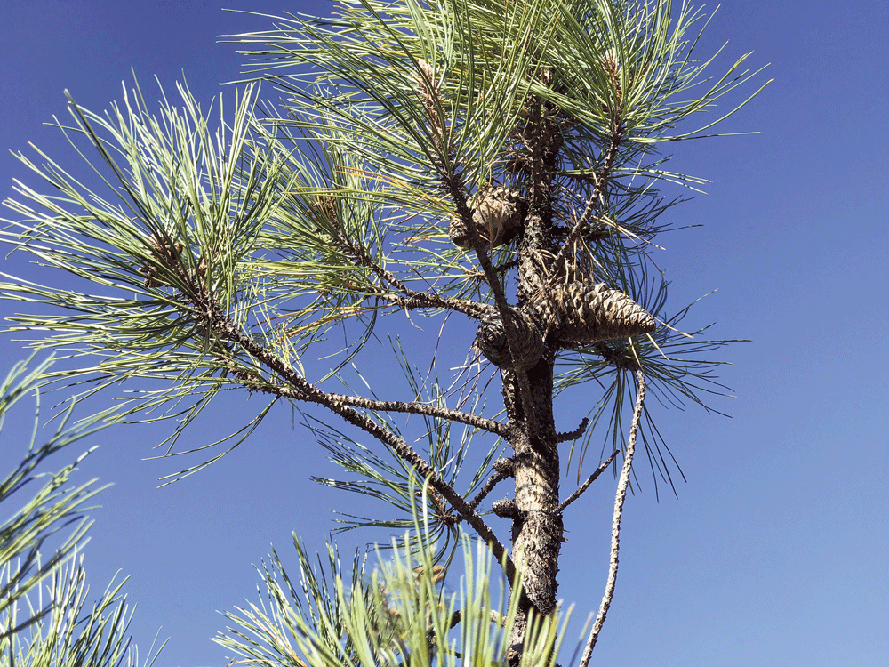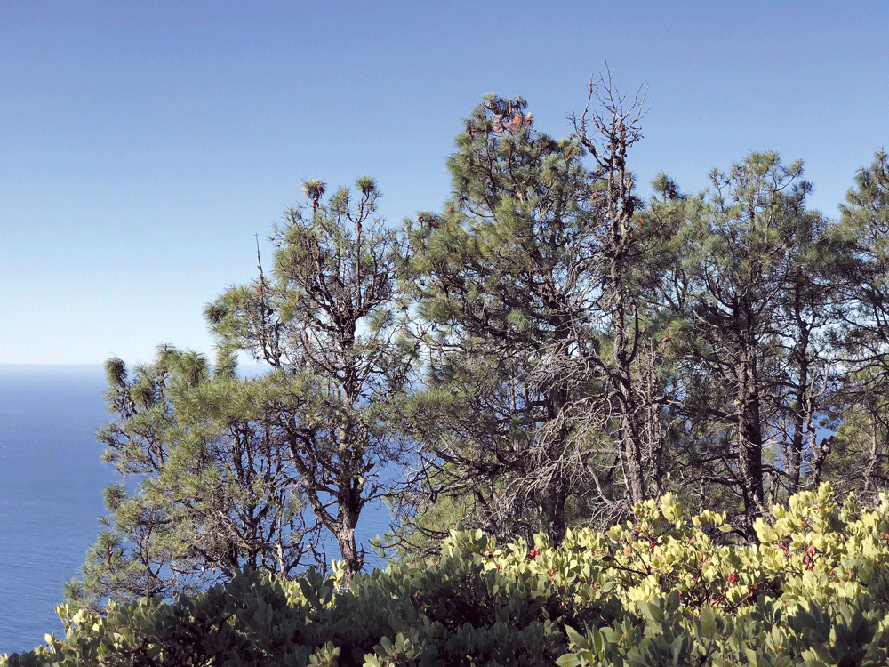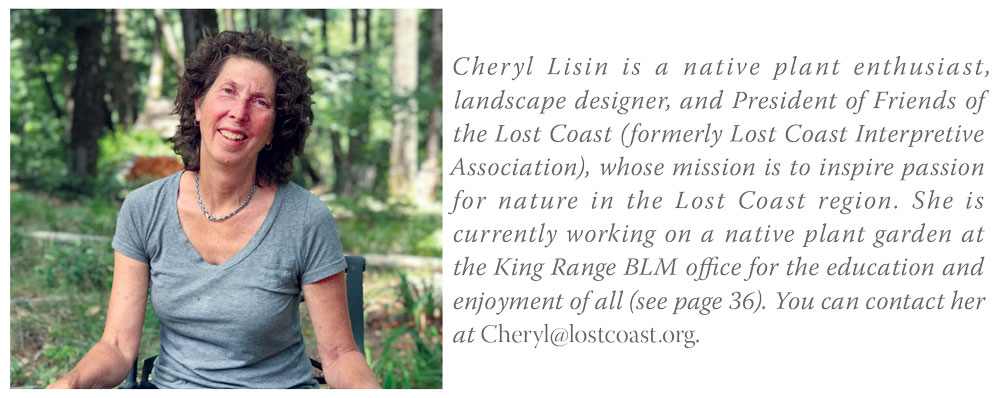Plant Notes
Knobcone Pine

Pinus attenuata
Plant Notes by Cheryl Lisin
In the fall of every year, the cones of most species of pine trees release their seeds. The seeds then germinate with the coming rains, thus perpetuating the species. Knobcone pines are different. Known as closed cone pines, knobcones require heat, usually from fire, in order to open up and release their seeds. This classic plant adaptation to fire is because the cones are effectively glued shut with resin, a phenomenon called serotiny. When the heat of fire melts the resin, the ¼-inch black seeds are released. Since knobcone pines tend to grow in fire-prone areas, they have evolved this adaptation over millennia, allowing the species to persist even if all the mature trees perish in a fire. Areas where knobcone pines were burned are soon covered in a blanket of seedlings. After a fire the seeds are released en masse, thriving because there is reduced competition from other plants. It is interesting to note that in the absence of fire, knobcone cones can eventually open after 20 or so years.
Knobcone pine trees don’t usually get very tall, maxing out at about 30 feet, and they are often scruffy-looking due to their adaptation to living on poor, gravelly soils in hot, dry areas. The needles are a faded olive-green color and are borne in bundles of three. The cones are distinctive, as they grow clustered tightly around the branches in whorls rather than at the branch tips, as in other pine species. The cones are asymmetrical and since the scales are tightly shut, they appear knobby. Cones stay on the tree for years—so long, in fact, that the wood of the branches sometimes grows around them, leaving odd bulges in the branches.

The trees’ range is most dense in the coastal mountains of Southern Oregon and Northern California, with populations more sparsely scattered along California’s central coastal mountains, around Mt. Shasta, the west slopes of the Sierra Nevada, the San Bernardino Mountains, and just north of Ensenada in Baja, California.
A great place to see knobcone pines and this remarkable plant adaptation to fire is on the Lost Coast Trail in the King Range National Conservation Area. On the ridgeline, just south of the spur trail to the peak of Chemise Mountain, the soil becomes rocky and the vegetation changes from dense forest to chaparral. Here, the trail passes through a stand of knobcones, where the pictures for this article were taken.

